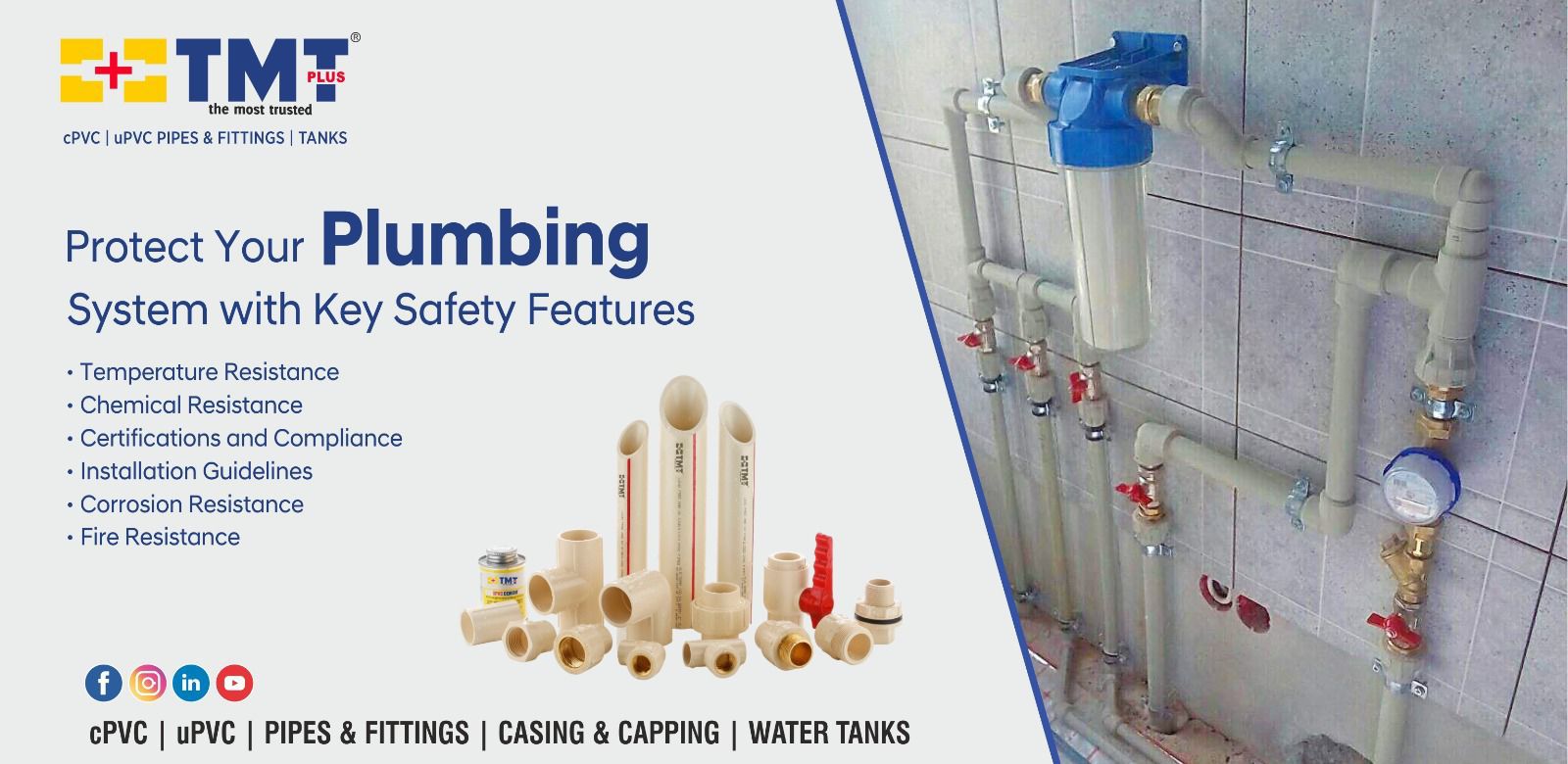 Safety is a paramount concern that is often overlooked, especially for your plumbing systems. Whether you are sitting in an office or relaxing at home, there is a potential risk that small leaks or installing the wrong pipes or fittings can compromise the safety and performance of your plumbing system and cost you heavily.
Safety is a paramount concern that is often overlooked, especially for your plumbing systems. Whether you are sitting in an office or relaxing at home, there is a potential risk that small leaks or installing the wrong pipes or fittings can compromise the safety and performance of your plumbing system and cost you heavily.This concern has made cPVC the go-to material for plumbing pipes and fittings. cPVC has seen a substantial rise in popularity due to its incredible features, which include being highly fire-resistant, cost-effective, durable, etc. But since there are a range of cPVC pipes and fittings manufacturers on the market, you have to choose your cPVC pipes and fittings while considering certain safety features:
Temperature Resistance:
Temperature fluctuations can impact the performance of your pipes, as they are often manufactured and tested keeping in mind certain applications. However, that is not the case with cPVC pipes. These pipes are highly resistant to temperature fluctuations, able to withstand hot temperatures up to 93°C and cold temperatures that are below freezing point. This makes them suitable for a wide range of applications, from residential to industrial and more. To minimise the risk of thermal-induced failures, choose brands whose pipes have high-temperature resistance.Chemical Resistance:
Pipes must be able to serve a variety of applications without compromising their structural integrity. Pipes that are made using the highest-quality cPVC materials have great resistance to not only harsh liquids but chemicals as well. If you intend to use these pipes in industrial settings, ensure that the pipes are chemically resistant. If they don't offer high chemical resistance, exposure to these chemicals can lead to leaks, ruptures, and material degradation.Certifications and Compliance:
Prioritise buying from top brands that manufacture their cPVC pipes and fittings in compliance with industry standards and regulations. This is because certifications for reputable organisations ensure that the pipes and fittings are made using the highest quality materials, giving utmost regard to safety and optimal performance. These certifications give you, as the customer, confidence in the reliability of these products that are made after rigorous testing.Installation Guidelines:
Prioritise buying from top brands that manufacture their cPVC pipes and fittings in compliance with industry standards and regulations. This is because certifications for reputable organisations ensure that the pipes and fittings are made using the highest quality materials, giving utmost regard to safety and optimal performance. These certifications give you, as the customer, confidence in the reliability of these products, which have undergone rigorous testing.Corrosion Resistance:
The most expected problem that is bound to arise with regular pipes is corrosion. However, that is not the kind of problem that arises with cPVC pipes and fittings, since they are highly resistant to corrosion. This feature ensures the prolonged durability of your plumbing system and works great in environments with high moisture levels. Always prioritise products with proven corrosion resistance to reduce maintenance requirements and the potential for unexpected failures.A Few Tips for Installing cPVC Pipes and Fittings
• Proper Layout
Ensure that you have a proper layout of your project’s plumbing system. Take exact measurements and get your pipes cut precisely to ensure a proper fit and minimise waste.
• Using Proper Tools
cPVC pipes are very difficult to break but can be cut using specialised tools. If you are installing these pipes yourself, make sure to use the proper tools as specified by the manufacturer.
• Cleaning the Pipes
To remove any dirt or debris, wipe the pipe ends and the inside of the fittings with a dry cloth. This dirt and debris can eventually accumulate and create a blockage in your pipes.
• Applying Solvent Cement
Evenly apply a thin coat of cPVC solvent cement to both pipes and fittings and ensure they are completely covered. Avoid applying excess cement, as it can clog the pipe.
• Holding Them Together
After applying the solvent cement, hold the pipes and fittings together for some time to allow the solvent cement to settle.
Best Brand for cPVC Pipes and Fittings?
There is a copy available for everything on the market, so why not the cPVC pipes and fittings? When making a major decision like this, you should always consider factors like customer reviews, the brand's legacy, the value of money, material quality, etc.TMT Plus is one of the leading cPVC pipe and fitting manufacturers in India and ticks all the above boxes, be it legacy, material quality, customer satisfaction, or anything else. We manufacture our products in-house in our high-end manufacturing facility, using only the highest-quality materials.
These cPVC pipes and fittings are rigorously tested and only cleared for use after passing more than 357 checkpoints. These quality measures help us to not only maintain consistent quality but also maintain decent pricing for consumers. The name TMT Plus is itself a testament to the brand’s legacy and the quality of the products it offers. This is because we are among the consumers’ most trusted brands for polymer products in India, a legacy and trust that we have established by constantly delivering on what we promise, i.e., Quality.
Keeping all the safety features in consideration while choosing your cPVC pipes and fittings will help you make the call as to why TMT Plus is the best brand for CVPC pipes and fittings that you should trust.
